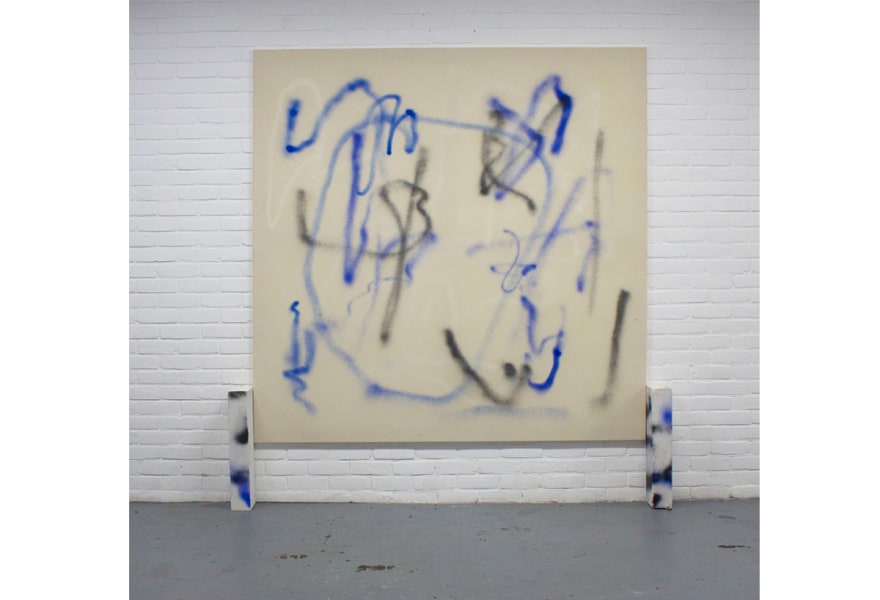07 may 2021, Wouter van den Eijkel
Kaspar Dejong | PoD, Path of Desire
In the Borgerhub, the Amsterdam-based gallery Josilda da Conceição shows a number of works by Kaspar Dejong in addition to work by Ruben Raven and Bernardus Baldus. The 25-year-old Dejong is making a name for himself with abstract work that originates in public space.
“The work that I want to show at Ballroom Projects is called PoD, Path of Desire”, Dejong starts. “The desired path that falls outside the specially devised paths, the fastest way to get from A to B, colloquially known as the elephant’s path. It's a flirt or anarchism. On the canvas you see a grid, such a rigid street map, and 4 red stripes at the bottom. These are taken from the red bar from the road sign for a cul-de-sac ”.
Dejong (1995) makes abstract work that originates in public space. He graduated from the Willem de Kooning Academy in 2017 and will complete his Masters at the Sandberg Institute this year. Just as poet K. Schippers pointed out that everything around us has a colour, Dejong has a keen eye for matters in public space that anyone else would ignore, because they are simply regarded as a given.
“Have you ever considered that road signs, such as the symbol for a dead-end street, are the same everywhere? You can drive onto the Autobahn without any problems, because the language of the road is the same. What fascinates me about this is that the power of symbols and semiotics transcends that of language. But how and by whom is the meaning of those signs determined?" Later on during our conversation, Dejong says: “I also made a work about the weeds that are now growing in the shopping streets, which are deserted due to the pandemic and lockdown. Normally, weeds wouldn't stand a chance to grow as they would be overrun immediately, but now they do”.
That public space is a central theme in Dejong's abstract work is understandable when you know that as a teenager he started tagging and spraying graffiti. “Grafiti of course has that nonconformist element to; just like the creators of those elephant paths, you don't conform to the rules. You look for places that are literally on the edge of the established order. Think of roofs, viaducts and noise barriers along railroad tracks. Places that are clearly visible, but difficult to reach”. Dejong speaks of secondary places.
“For me, it was not primarily about the work itself or about the cat and mouse game with the authorities, but about the process in public space”. Dejong sees grafiti as a kind of dialogue: “Finding a spot, making the work, and when it is removed it is still partly visible. One of my works is therefore also called Palimpsest, the impression that remains after the original has been removed.”
Dejong's practice is also a form of dialogue. “For me, a work is not lost or a failure if it gets stained at some point”. He prefers to work on raw canvas, on the floor. He applies thin layers of paint on top. Let’s it dry for a day, sees what the painting needs. Removes a layer, then applies graffiti again, until he’s happy with the result.
He will bring one or two other works to Ballroom Projects. ” I’ll decide which ones they will be there and then. This also depends on how the works relate to the space. What is certain is that I will put down a number of ceramic laughing gas cylinders. I consider them to be still lifes abandoned on the street. Many older people won’t know what they are and what they have served for. In fact, it is a reflection of a generation. Just like our concentration span, the intoxication is also short ”.




